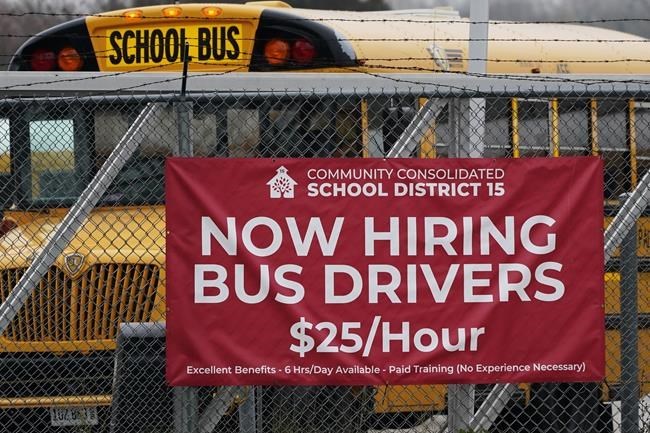Slightly more Americans filed for jobless claims last week, but the overall number of people in the U.S. collecting unemployment benefits rose to its highest level in two years.
Applications for unemployment benefits rose by 7,000 to 218,000 for the week ending Nov. 25, the Labor Department reported Thursday.
However, 1.93 million people were collecting unemployment benefits the week that ended Nov. 18, about 86,000 more than the previous week and the most in two years. Continuing claims have risen in nine of the past 10 weeks.
Jobless claim applications are seen as representative of the number of layoffs in a given week.
Analysts say the continuing claims are rising because many of those who are already unemployed may now be having a harder time finding new work.
And while the labor market remains strong, some softness is beginning to show.
Hiring has slowed from the breakneck pace of 2021 and 2022 when the economy rebounded from the COVID-19 recession. Employers added a record 606,000 jobs a month in 2021 and nearly 400,000 per month last year. So far in 2023, monthly hiring has averaged a still-solid 239,000, but it’s come in below 200,000 in three of the last five months.
Employers are also posting fewer job openings.
The Federal Reserve has raised its benchmark interest rate 11 times since March 2022 to slow the economy and rein in inflation that hit a four-decade high last year. The job market and economic growth remained surprisingly resilient, defying predictions that the economy would slip into a recession this year.
At the same time, inflation has decelerated markedly.
The Commerce Department reported Thursday that the Federal Reserve’s preferred inflation measure cooled last month, the latest sign that price pressures are waning in the face of high interest rates and moderating economic growth.
Prices were unchanged from September to October, down from a 0.4% rise the previous month. Compared with a year ago, prices rose 3% in October, below the 3.4% annual rate in September. It was the lowest year-over-year inflation rate in more than 2 1/2 years.
Labor's layoffs data Thursday also showed that the four-week moving average of jobless claim applications — which flattens out some of weekly volatility — fell by 500 to 220,000.
Matt Ott, The Associated Press



